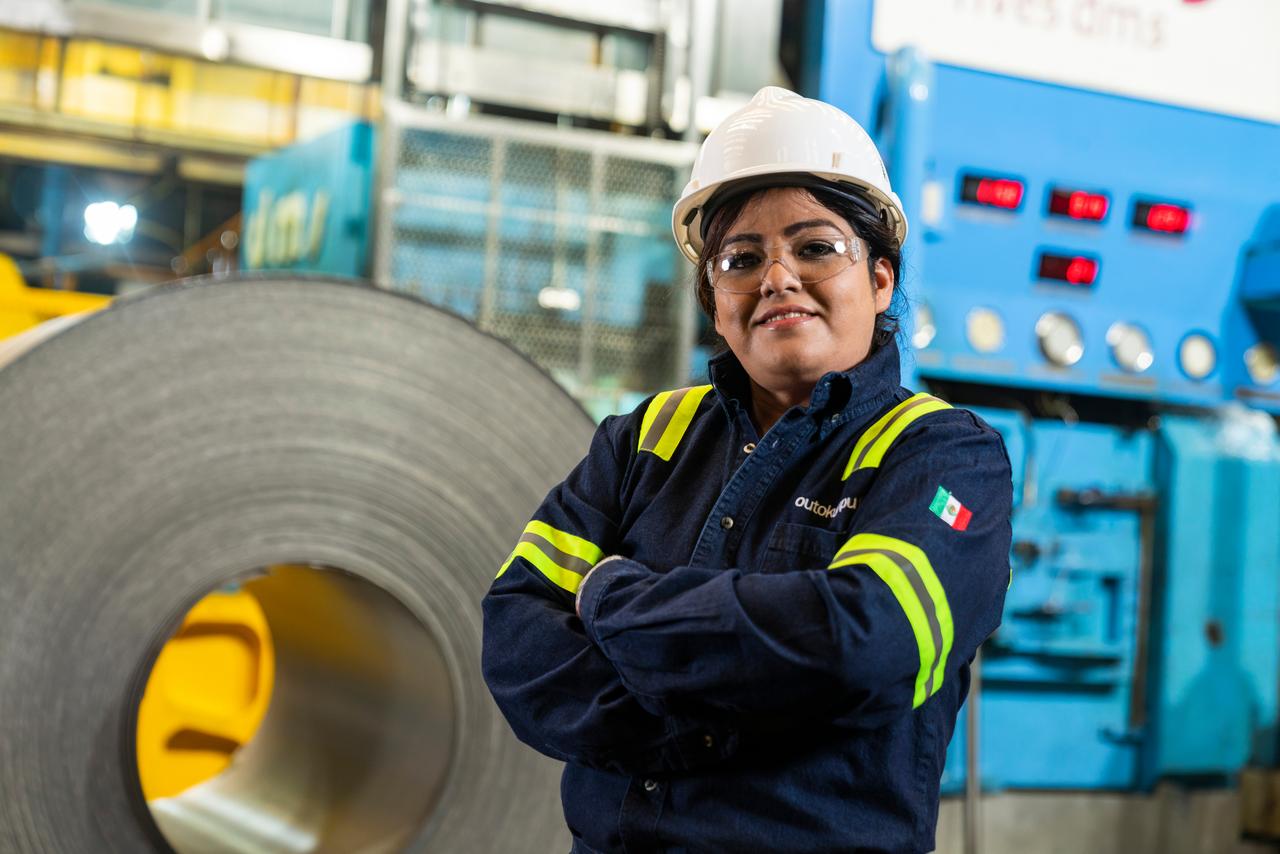Impulsando el éxito de la creciente industria de tanques en Estados Unidos y México con acero inoxidable resistente a la corrosión
El acero inoxidable es el material ideal para una amplia variedad de tanques, como los de proceso, mezcla, almacenamiento y criogénicos. Su resistencia a la corrosión lo hace indispensable en industrias como la láctea, alimentaria y de bebidas, farmacéutica, cervecera, de procesamiento químico y de fabricación de cosméticos.
Esto ofrece el doble beneficio al proteger la integridad del producto y garantizar una larga vida útil. Además, el acero inoxidable es fácil de limpiar, un factor clave para la mayoría de las industrias y especialmente importante para garantizar la higiene en el procesamiento y manejo de alimentos. También es un material resistente que puede moldearse para la fabricación de tanques y recipientes.
Por otro lado, la sustentabilidad es uno de los principales atributos del acero inoxidable. Su durabilidad asegura una extensa vida útil y, al finalizar su ciclo de vida, es completamente reciclable. Outokumpu cuenta con el mayor porcentaje de contenido reciclado en su producción, superando el 90%.
Calvert y Mexinox: productos de calidad, experiencia técnica y asistencia especializada
Nuestra planta de producción en Calvert, Alabama, es la más avanzada técnicamente en Estados Unidos. Integra procesos de fundido y colado, así como laminado en frío, y cuenta con una línea de acabado final de última generación con capacidades de pulido, corte longitudinal y corte a medida.
En San Luis Potosí, Outokumpu Mexinox es la única planta productora de acero inoxidable en México. Produce rollos, flejes, círculos en una amplia variedad de calibres. Sus servicios de acabado incluyen corte longitudinal, corte a medida, troquelado, corte láser y una variedad de acabados superficiales personalizados.
Mexinox también cuenta con un laboratorio certificado donde se evalúan las propiedades mecánicas y químicas del acero inoxidable. Además, dispone de un equipo de expertos técnicos listo para brindar asistencia en procesos de producción y selección de materiales, así como en capacitación y desarrollo de materiales.
Aumenta la productividad con las bobinas más anchas de la industria
La industria de tanques en América del Norte utiliza principalmente cuatro grados de acero inoxidable austenítico. La mayoría corresponde a Core 304/4301 y Core 304L/4307, mientras que Supra 316/4401 y 316L/4404 representan un pequeño porcentaje. Además, una cantidad limitada de Supra 316LN/4429 se emplea en aplicaciones criogénicas.
Las plantas de Outokumpu en América del Norte ofrecen una variedad de acabados superficiales y pulidos para satisfacer las necesidades específicas de cada aplicación de tanques. El acabado más utilizado en tanques de acero inoxidable es el No. 2B, según la designación de ASTM. Se caracteriza por una superficie tersa y ligeramente reflectante.
Una de las principales razones por las que los fabricantes de tanques y OEMs eligen el acero inoxidable de Outokumpu es por su versatilidad y amplia variedad de presentaciones disponibles, que incluyen bobinas, placas y cortes a longitud. Outokumpu es el único productor en América del Norte que ofrece bobinas con un ancho de 1,828.8 mm (72 pulgadas). El uso de bobinas más anchas puede aumentar la productividad al reducir el número de soldaduras necesarias para fabricar el tanque completo.
Encuentre el grado y el acabado superficial ideal de acero inoxidable para su aplicación en el proceso de fabricación de tanques
Omar Testa, Gerente Senior – Soluciones al Cliente en Outokumpu, señala que:
"El consejo más importante que puedo dar a quienes seleccionen un material para un tanque es recordar que no todos los aceros inoxidables son iguales. Es fundamental elegir el grado y el acabado superficial adecuados para la aplicación o el uso final."
En muchos casos, el grado 304 se considera el estándar. Sin embargo, en ciertos procesos donde hay presencia de ácido sulfúrico, se requiere un mayor nivel de resistencia a la corrosión, por lo que se recomienda el uso del grado 304L.
Además de la correcta selección del grado de acero inoxidable, también existen acabados superficiales especiales diseñados para satisfacer aplicaciones y requisitos específicos. Por ejemplo, en aplicaciones de acero inoxidable para la industria alimentaria, se considera adecuado un acabado Pulido No. 4 (caracterizado por un ligero desbaste en la superficie del material). Para lograrlo, la rugosidad superficial promedio (Ra) generalmente se obtiene utilizando una banda abrasiva de grano alto en un rango de 150-220. Sin embargo, en aplicaciones lácteas, donde la higiene es aún más crítica, se recomienda un acabado alternativo, logrado con una banda abrasiva de grano 220 o más fino.
Enrique 'Henry' Zaldivar, Gerente de Soluciones Técnicas, también señala que:
"Nos complace brindar un soporte técnico integral para garantizar que nuestros clientes aprovechen al máximo nuestros productos de acero inoxidable, desde su diseño hasta la fabricación y a lo largo de su ciclo de vida. Invito a todos los que estén considerando el acero inoxidable como una opción para la fabricación de tanques a que se acerquen a nosotros para recibir asesoría, independientemente del canal de compra, ya sea directamente o a través de un distribuidor o mayorista. La colaboración es un pilar fundamental de nuestro trabajo, con el objetivo de impulsar el éxito de la creciente industria de tanques en América del Norte."
Gracias a la experiencia de Outokumpu en la industria de tanques en Estados Unidos y México, usted podrá seleccionar la mejor solución en acero inoxidable, garantizando seguridad, confiabilidad, sustentabilidad y rentabilidad.
